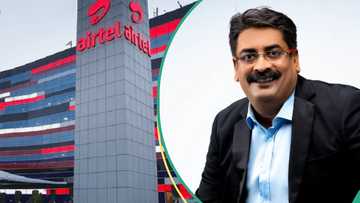Personnel management: Definition, types, and functions in an organization
Employees are the most critical factors of production in any company; the overall success of an enterprise is based on their activities. Effective personnel management ensures the right individuals with the necessary skills and qualifications are recruited for positions. Hiring the right people can lead to increased productivity and positive work culture.

Source: UGC
Personnel management involves implementing strategies to boost employee morale and maintain a healthy work environment. It contributes to the overall growth and development of the organisation by aligning employee goals with organisational objectives.
What is personnel management?
Personnel management involves all activities used to obtain, control and maintain a satisfied workforce in a company. Personnel management makes it possible to determine the following:
- Goals and guidelines for working with staff.
- Means, forms, and methods of accomplishing the set goals.
- Ways to organise work to implement the decisions made.
- Monitoring the implementation of planned activities.
- Continuous improvement of the personnel management system.
What is an example of a management personnel?
An example of management personnel is a human resources manager. They are in charge of managing numerous aspects of the workforce and supervising the HR division.
What are the 3 types of personnel management?
The three types of personnel management are:
- Strategic personnel management: This focuses on planning how to best support staff members and an organisation's current and future staffing needs.
- Tactical personnel management: It involves administrative planning, developing HR resources, and using them to plan staffing processes.
- Operational personnel management: It refers to the daily functions of human resources in employee relations.
Basic functions of personnel management in an organisation
Personnel management encompasses various functions and responsibilities to manage an organisation's workforce effectively. Some of the key functions include:
- Personnel assessment.
- Motivation of staff.
- Training of personnel.
- Creation of comfortable social conditions in the team.
- The most effective use of the potential of employees and their remuneration.
- Providing a guarantee of social responsibility to each employee.
- Analysis of human resources and planning of its further development.
- Answering individual questions regarding the psychological compatibility of employees.
- Ensuring a safe and healthy workplace by implementing safety protocols and providing resources for employees' well-being.
- Selection, recruitment, training (if necessary) and control of personnel to improve the company's success.
- Implementing performance appraisal systems to evaluate employee performance, provide feedback, and set goals for improvement.
- Development of a favourable moral climate and organisational structure to enhance the creative activities of each employee.
What is the role of a personnel manager?

Source: UGC
Personnel managers serve an important role in developing a team of professionals. Some of their responsibilities include:
- Hiring new staff and completing necessary paperwork.
- Counsel employees and discuss various problems affecting them.
- Assists the senior management in creating policies pertaining to personnel management, salary administration, and welfare activities.
- Ensure employees are treated fairly and equitably, and their rights are protected.
- Approving personal time off requests and creating company schedules.
- They are responsible for developing and implementing policies and procedures related to employee relations, compensation and benefits.
- Overseeing the payroll process and ensuring timely payments.
- Overseeing employee departures and conducting exit interviews.
Elements of personnel management
Elements of personnel management collectively contribute to a well-functioning and productive workforce. Some of these elements include:
- Recruitment and selection: The process of attracting, assessing, and hiring the right candidates for job positions within the organisation.
- Training and development: Giving staff members opportunities to learn new things and build existing skills to improve their jobs and careers.
- Performance management: Assessing and evaluating employee performance to give feedback, establish goals, and pinpoint improvement areas.
- Employee engagement: Maintaining high levels of employee motivation, contentment, and commitment while fostering a favourable work environment.
- Compensation and benefits: Managing benefits, bonuses, and employee compensation plans to entice and keep brilliant people.
- Health and safety: Establishing safe working conditions, putting safety procedures into place, and attending to employee well-being.
- Succession planning: Planning for the future by finding and training personnel who can fill important positions in the case of a leadership change.
- Employee communication: Setting up efficient ways to tell staff of organisational changes, updates, and policies.

Read also
“Interests of consumers”: Airtel CEO finally reacts to approved increase in call, data tariff
How to develop a favourable moral climate

Source: UGC
Collective, coordinated work is the basis for the successful operation of a company. Every team consists of people with different temperaments, thoughts and feelings, so a lot of effort needs to be put into creating a favourable moral climate in every organisation. This can be achieved by ensuring the following:
- High regard for each other, combined with trust.
- Benevolent business criticism.
- Full awareness of the team members on the tasks, state of affairs and when different decisions are implemented.
- Free expression of one's opinions on issues that affect the whole team.
- Calm attitude to the opinions expressed by colleagues.
- Emotional involvement and mutual assistance.
- The ability of each team member to take responsibility for the state of affairs in the organisation.
Is personnel management the same as HR?
Personnel and human resource management are almost the same, with a minor difference. They both focus on administrative tasks, such as recruitment, payroll, record-keeping, and ensuring the organisation's overall goals and long-term vision are met.
Personnel management plays a crucial role in ensuring the organisation runs smoothly and efficiently. Its significance lies in facilitating the seamless functioning of the entire organisation.
Legit.ng recently published an article explaining the meaning behind a golden retriever boyfriend and where the term came from. The golden retriever boyfriend meaning is derived from the characteristics of a good partner.
The Urban Dictionary describes a golden retriever boyfriend as an easy-going partner who can maintain a loving relationship. You may describe them as the ideal partners for girls.
Source: Legit.ng





